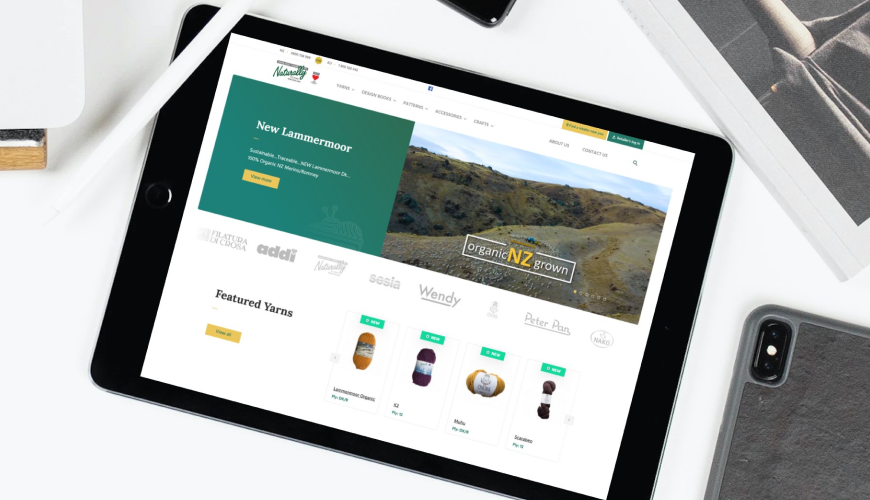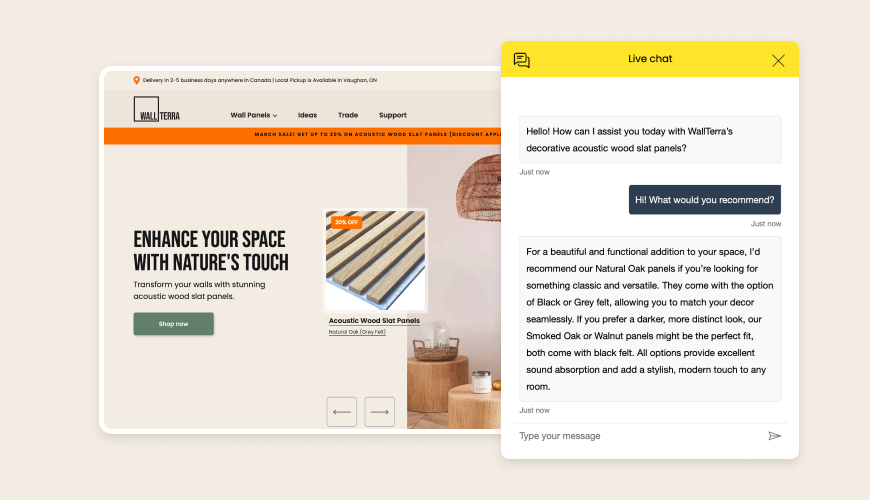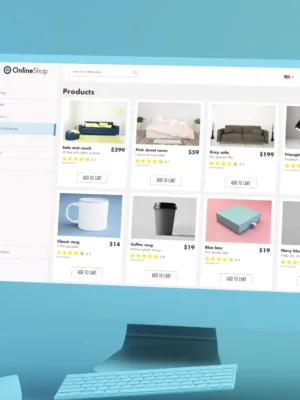
The look and functionality of your ecommerce website can be the deciding factor between a one-time visitor and a lifelong, loyal customer. The secret lies in web design and web development practices that cater directly to user needs and preferences. Let's explore some tried-and-true strategies that can elevate your ecommerce site from good to great.
First things first: Know your audience.
Understanding your audience is like building a map of your ideal customers. You target preferences and behaviors, and then craft your site to fit their wants and needs. By doing so, you make them feel at home and increase the likelihood of a purchase. User personas, or detailed customer profiles, should influence every bit of your site’s design and functionality. This way it can remain directly tailored to your audience. Rather than fussing over all the tiny details, you should focus on whatever is going to appeal most to your visitors and make the sales process not just easier, but enjoyable and personal. In the end, you want to set the stage for a shopping experience that keeps your visitors coming back for more.
UI is a King in web design and development.
Easy navigating.
When it comes to web design, making your site easy to navigate is like laying out a welcome mat for your visitors. A clear, straightforward path through your site means people can find what they're looking for with ease. It's all about creating a smooth journey from homepage to checkout. Just like a well-organized store, your site should have everything in its right place. This approach not only keeps visitors happy but also helps turn casual browsers into buyers.
Mobile optimization.
Your ecommerce site must be mobile-friendly. With more people window shopping on their phones than ever, a site that looks great and works well on mobile is key to catching their attention. From big, clickable buttons, and text that's easy to read on a small screen, to pages that load in a snap - all these features add up to a great user experience.
One of our projects developed for Naturally Yarns, showcases a fully responsive and adaptive website helping knitters and crocheted seamlessly explore a vast catalog of products, whether on a phone, tablet, or desktop.

Website performance.
Speed and smoothness are the names of the game in web development. A site that loads quickly and runs without glitches can make the difference between a sale and a lost customer. It's like keeping the lines moving fast in a busy store, so no one walks out in frustration. Behind the scenes, this involves compressing images, minimizing code, and using the latest tech to keep everything running smoothly.
Smooth shopping: Top priority in ecommerce design.
Secure payment.
When it comes to online shopping, making sure every purchase is secure is like ensuring the doors are locked at night. It's all about giving your customers peace of mind, knowing their information is in safe hands. In the world of web development, this means using top-notch encryption and secure payment gateways to protect every transaction. It's like having a digital security guard for every shopper, ensuring their buying journey is as safe. This level of security isn't just good practice; it's essential in building trust with your customers.
Clear product presentation.
"Show, don't tell" principle is important, especially in ecommerce. High-quality images and detailed descriptions let your customers see and almost feel what they're about to buy as if they were in a physical store. Highlighting product features and benefits through engaging visuals and compelling copy enhances the shopping experience and minimizes returns.
Streamlined checkout.
Imagine if buying something online was as easy as picking it off a shelf. That's the goal when simplifying the checkout process in ecommerce web development. It's about reducing steps, asking only for essential information, and making sure everything from cart to confirmation is a smooth sail. This means no mandatory account creation, no surprise charges, clear options for shipping, and a big 'Place Order' button to seal the deal.
Customer reviews.
There's nothing like a good word from someone who's already bought what you're eyeing. Integrating customer reviews is like having a crowd of satisfied shoppers vouching for your products right on your site. It's a powerful form of social proof that can sway decisions and build confidence in your brand. Encouraging and showcasing customer feedback is a good practice in web design, turning happy customers into your most effective marketers.
Personalization: Central to ecommerce site strategy.
Similar items.
Imagine walking into your favorite store and finding a section curated just for you, filled with items that perfectly match your taste. That's the power of featuring similar products on your ecommerce site. It's like having a personal shopper suggest items you might like, based on what you're currently viewing. This gem feature keeps customers engaged and increases the chances of discovering new favorites and adding them to the cart.
Breadcrumbs.
Breadcrumbs in web development are like leaving a trail of digital pebbles; they help your customers trace their steps back or understand where they are on your site. This feature is especially handy on complex ecommerce platforms with multiple categories and subcategories. It's about making the journey through your site as clear and straightforward as a well-drawn map. Breadcrumbs not only enhance usability but also contribute to a better-structured website, improving overall user experience and satisfaction.
Recent views.
Remembering what customers were last looking at is like giving them a gentle nudge, "Hey, were you still interested in this?" It's a thoughtful touch that can significantly enhance the shopping experience on your ecommerce site. By keeping a record of recently viewed items, you're making it easy for customers to pick up where they left off, without having to start their search from scratch.
While often overlooked, this feature is akin to bookmarking pages in a catalog for later reference. It's a convenience that customers appreciate, making your site not just a place to shop, but a personal shopping assistant.
Joyful Shopping: Heart of Ecommerce Engagement.
A range of shipping choices.
A variety of shipping options is like offering them the VIP treatment in delivery. Whether they need their purchase in a hurry or are looking for the most cost-effective method, having choices puts them in control. This flexibility in web design can be a deciding factor for customers teetering on the edge of a purchase. Plus, it's a great way to cater to a broader audience, making your ecommerce site a go-to for all kinds of shoppers.
Samples and try-before-you-buy options.
Including a little something extra with orders, such as product samples or a try-before-you-buy feature, feels like receiving an unexpected present; it's guaranteed to brighten anyone's day. This thoughtful touch not only makes the unboxing moment more exciting but also gives customers a chance to experience new products they might have overlooked.
Providing samples or trial options invites customers into a great shopping journey, encourages them to explore your product lineup, and ultimately places an order or a few.
Loyalty program.
Implementing a loyalty program on your ecommerce site is like saying "thank you" every time a customer shops with you. It's a way of acknowledging their choice to return to your site, rewarding them with points, discounts, or exclusive deals. This aspect of web design is about building a community of repeat customers who feel valued. A well-thought-out loyalty program can significantly enhance customer retention and turn casual shoppers into brand advocates.
Round-the-clock assistance with chatbots.
Let's look at the WallTerra.com example, where we integrated AI chatbots to offer customers help whenever they need it. These helpful assistants are available 24/7, ready to answer questions, offer recommendations, or guide users through the checkout process. This feature is a game-changer in web development, ensuring that help is always at hand, boosting customer confidence and engagement. Chatbots can significantly reduce customer frustration and make shopping easier and faster.

Fair return policy.
Having a clear and fair return policy is like extending a handshake of trust to your customers. It reassures them that their satisfaction is your top priority and that you stand behind the quality of your products. A good return policy removes the perceived risk from buying online, making customers more comfortable with their decisions.
Wrap up.
It's clear that the heart of a thriving ecommerce site lies in understanding your audience and delivering an exceptional shopping experience. From the initial design phase to ongoing development, every element should aim to make shopping simple, enjoyable, and personalized.
Is your ecommerce project ready to take the next step? Follow these best practices and watch your online store grow.
And if you're looking for some expert help along the way, we've got you covered. Convergine specializes in creating ecommerce websites that look great, convert well, drive sales and make both customers and owners happy.








